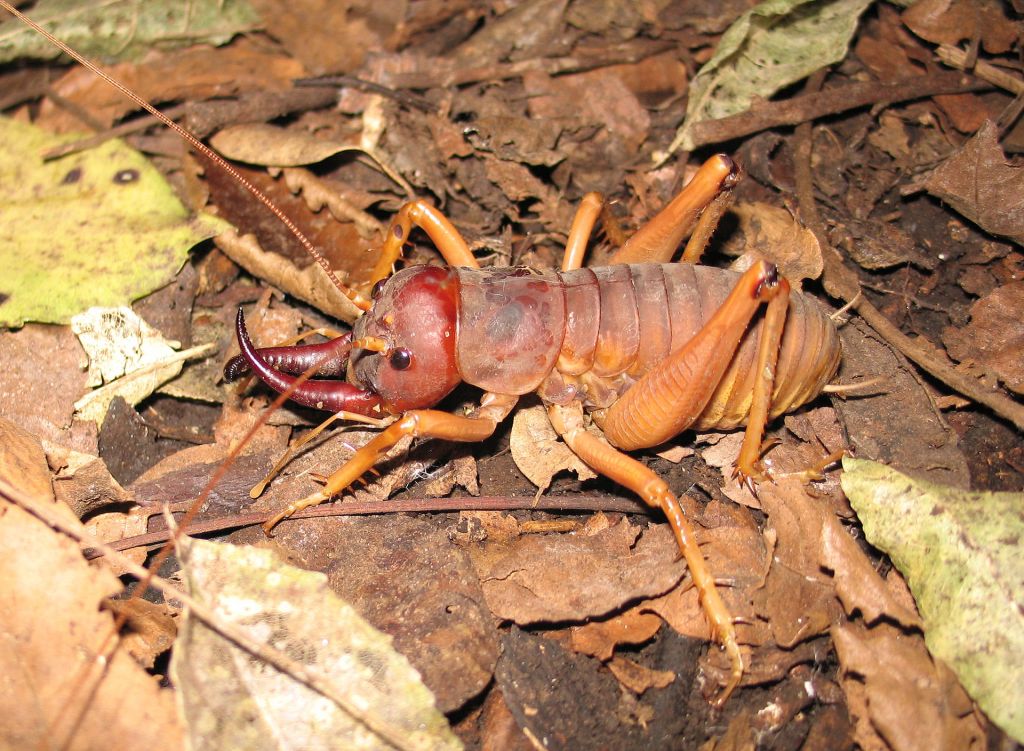The other day I was playing a trivia app on my phone and came across an animal called the giant weta. I’d never heard of it before, so I looked it up. It turns out that wetas are cricket-like insects from New Zealand, and are actually some of the largest insects in the world.
There are about seventy species of weta, belonging to two different families, Anostostomatidae and Rhaphidophoridae. All species are endemic to New Zealand, but some are also found in Australia and other islands. Interestingly, every species in New Zealand is flightless, although those in other places can fly (and are some of the heaviest insects able to do so).

I’ve mentioned it before, but I’ll say it again: wetas are big. The largest species usually is about 10 cm long (not including legs and antennae – with them they are about 20 cm long), and weigh on average 20-30 grams. The largest specimen ever recorded was a whopping 70 grams, which is heavier than a sparrow.
Wetas are an example of island gigantism, a phenomenon where animals on islands are larger than their mainland counterparts. It likely occurs because of the lack of predators and competition usually found on islands.
Wetas are usually omnivorous, eating other insects and leaves and fruit. The weta has a powerful bite, which is quite painful to humans. Luckily, wetas don’t bite that often, preferring instead to rely on their large, spiny appearance for protection. They are nocturnal, and live in a wide variety of habitats, from mountains to forests and even caves. Apparently they can also be kept as pets, and tree wetas will readily nest and live in a prepared piece of wood in a garden.
This is probably one of the only animals I’ll say this about, but I don’t think I’d like to have a weta as a pet. I just don’t think it would be very fun to have one. Also, they aren’t very cute. But I’m sure some people think they’re adorable. To each his own, I guess.
Cover image By James O'Hanlon – Provided by author for Commons, CC BY 4.0

